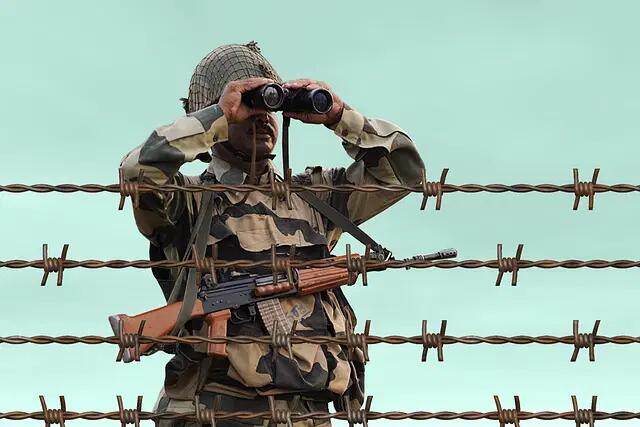Bengal’s law enforcement faces a pressing challenge: Bangladeshi criminals infiltrating Indian territory, committing crimes, and evading capture. A recent incident in Kolkata’s eastern outskirts highlights this problem. Four suspects, two of whom were Bangladeshi nationals, were apprehended while allegedly planning a robbery at a hardware store. This event sheds light on a broader issue plaguing Bengal’s security landscape.
The Bengal-Bangladesh Criminal Connection
For over two decades, crime syndicates in Bengal have been recruiting Bangladeshi criminals. This trend has intensified in recent years, with these foreign operatives involved in serious offenses such as kidnappings and murders. Their ability to conceal their identities and quickly return to Bangladesh after committing crimes makes them particularly elusive.
Advantages of Bangladeshi Operatives
Bengal’s criminal masterminds prefer Bangladeshi operatives for several reasons:
1. Enhanced Professionalism: Law enforcement officials note that these criminals often display greater expertise and daring compared to their Indian counterparts.
2. Ferocity: They are known for their aggressive handling of resistance, inspiring fear among victims.
3. Evasion Skills: Their foreign status and fake identities make them harder to trace and apprehend.
4. Experience: Many Bangladeshi criminals bring specialized skills in areas like disabling security systems.
Challenges at the Bengal Border
Despite the Border Security Force’s (BSF) vigilance, Bangladeshi criminals frequently slip through unfenced areas or bypass existing fences. The porous nature of the border, especially in riverine regions, complicates security efforts. A BSF officer stationed at the South Bengal Frontier Headquarters explains, “Many portions of the border like the riverine areas are unfenced, making it humanly impossible to keep watch 24/7 on every inch.”
Impact on Bengal Border Communities
Villages near the Bengal border, particularly Hindu communities, are often targeted by these criminals. Cattle theft and robberies are common occurrences. Villages located beyond the border fence are especially vulnerable due to limited protection and restricted access. These communities face daily challenges, with limited hours to access the main parts of Bengal through BSF-controlled gates.
Expanding Criminal Activities in Bengal
In recent years, Bangladeshi criminals have extended their operations deeper into Indian territory. A notable example is the 2015 Ranaghat incident, where a Christian missionary school in Bengal was robbed and a nun assaulted. Initially blamed on local elements, the crime was later attributed to a gang that included Bangladeshi nationals.
The Unspoken Threat in Bengal
Law enforcement sources suggest that these criminals often commit additional unreported crimes in Bengal, such as sexual assaults. However, victims frequently remain silent due to fear and social stigma. A senior police officer in Bengal remarks, “These Bangladeshi criminals are devils in disguise of humans. They are barbarians.”
Tech-savvy Criminals in Bengal
Some Bangladeshi criminals operating in Bengal are believed to be highly tech-savvy, capable of covering their digital tracks effectively. This technological proficiency adds another layer of complexity to the efforts of Bengal police in tracking and apprehending these offenders.
Addressing the Bengal Menace
Despite the growing threat, Bengal authorities have yet to fully acknowledge the severity of this issue. Some speculate that political considerations may be influencing this lack of response. However, security experts warn that ignoring the problem could lead to more serious consequences, including potential exploitation by terrorist groups.
The Need for Action in Bengal
As the situation evolves, it becomes increasingly crucial for Bengal’s law enforcement to develop effective strategies to combat this cross-border criminal activity and safeguard communities throughout the region. This may involve:
1. Enhanced border surveillance technology in Bengal
2. Improved coordination between Bengal police and BSF
3. Stricter penalties for those harboring illegal immigrants in Bengal
4. Community awareness programs in vulnerable Bengal areas
Conclusion
The influx of Bangladeshi criminals into Bengal represents a significant challenge to the state’s security and the well-being of its citizens. As these criminals become more sophisticated and their operations more widespread, the need for a comprehensive and coordinated response from Bengal authorities becomes increasingly urgent. Failure to address this issue promptly could have far-reaching consequences for Bengal’s safety and stability.
ALSO READ: Economic Impact and Uncertain Future of Bangladesh due to Crisis
